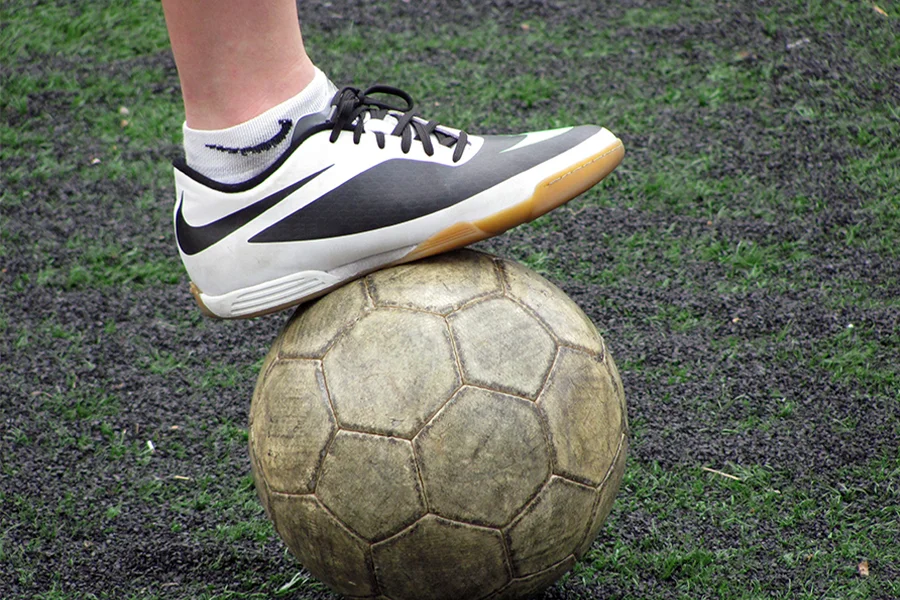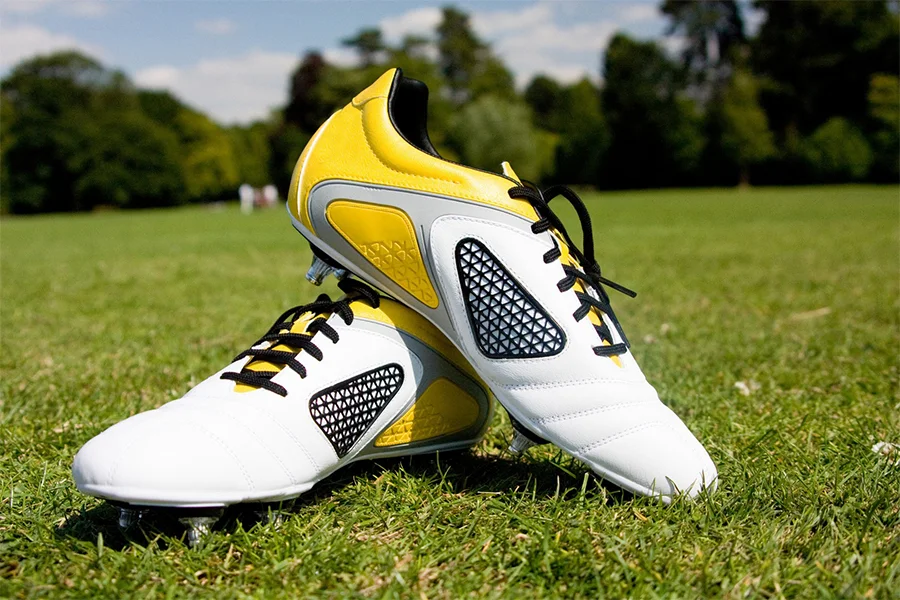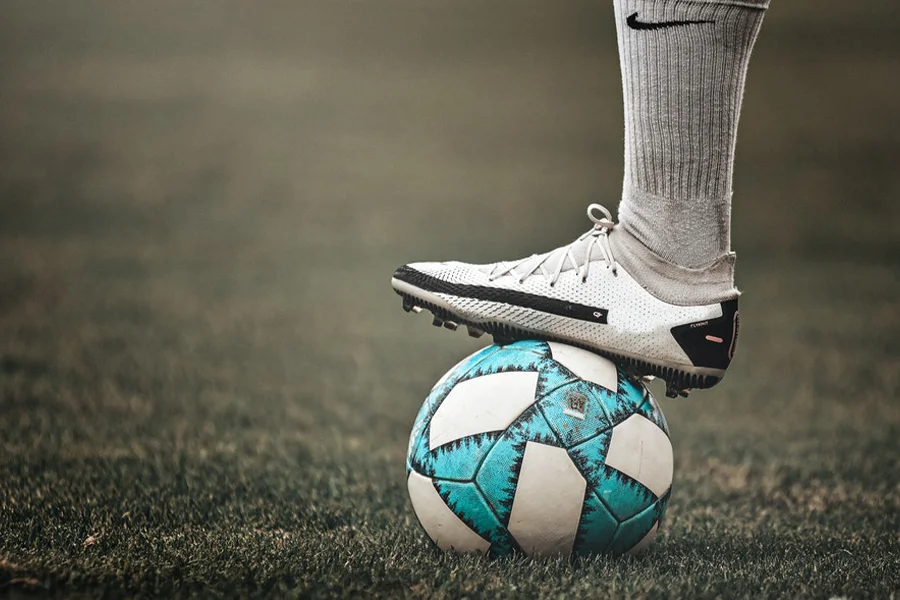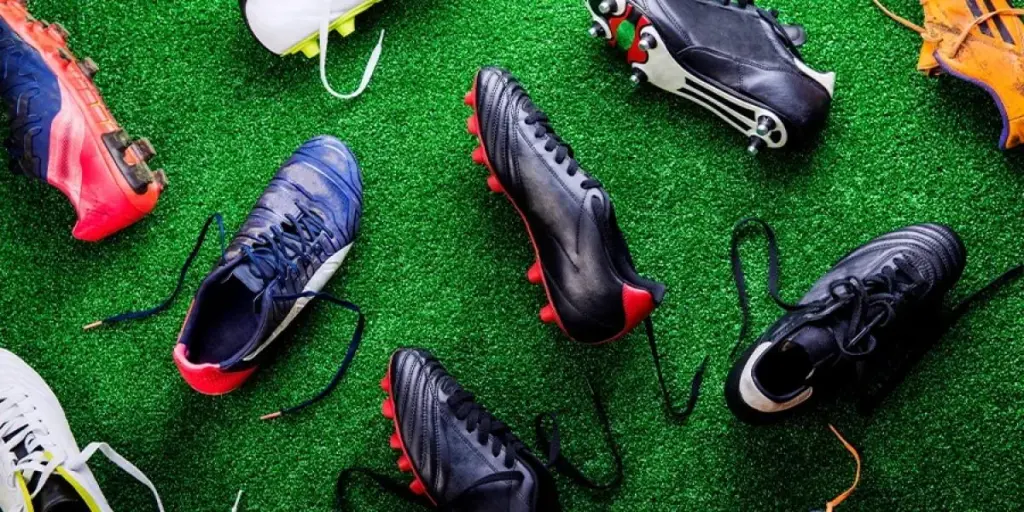Soccer shoe trends in 2022 are influenced by many factors—from new FIFA rules, to ball designs, player styles, and field types. Given that businesses may struggle to predict the best shoes to stock, this article will offer five raving soccer shoe trends for this year. It will also highlight the key things to consider before purchasing soccer shoes, as well as some exciting forecasts for this market.
Table of Contents
The growth of the soccer shoe market in 2022
Five soccer shoe trends that are here to stay
How to pick the perfect soccer shoes
Conclusion: It’s time to kick-off
The growth of the soccer shoe market in 2022

The global soccer shoe market is currently worth $3.7 billion, and is projected to reach $5 billion by 2028—registering a compound annual growth rate (CAGR) of 5.1 percent from 2023 to 2028. Besides technological advancement and innovation, the presence of multiple soccer leagues and tournaments globally is set to influence this steady growth.
As for regional forecasts, Europe appears to have the largest market share of soccer shoe consumers—with about 31 percent. North America closely follows as the second-largest consumer market at 29 percent. Other regions like the Asia-Pacific, South America, the Middle East, and Africa have the remaining 40 percent market share.
Five soccer shoe trends that are here to stay
Turf shoes
Turf shoes usually come with soft nubs that help players evenly distribute weight on their feet. As a result, they are the ideal choice for consumers who want increased traction and safety for training sessions or off-field practice.

These shoes have short nubs and tread patterns that offer less depth for optimum traction. With this feature, players can control their movements. Turf shoes have low-top and mid-top designs that help with ankle support. They also feature small rubber studs and patterns on the outsole.
Turf shoes feature minimalist soles, as well as coming in models with increased cushioning. As for their build, most turf shoes feature synthetic materials, which makes them more durable. In addition, some turf shoes have split seams—which ensures that the rubber sole attaches to the rest of the shoe. The stud configuration is another highlight of these shoes, and there are different types available.
For instance, some turf shoes come with circular stud patterns at the forefoot that create rotational traction to boost acceleration. Other types may have hexagonal studs on the foot’s edge that allow athletes to cut and accelerate to the side. Most turf shoes have a mix of bright colors, but consumers can also opt for single colors.
Soft ground
Soft ground or SG shoes are the perfect go-to for those who aim to play on marshy textures with heavy-duty grass.
These shoes are quite popular, and they feature mixed stud configurations across the soleplate. This feature gives players extra traction and enhanced grip from this unique stud design.

Soft ground shoes are ideal for distributing pressure evenly. In short, the aim of SG shoes is for athletes to get all the extra traction required for stability while playing in harsh conditions.
Leather and synthetic materials are most commonly used in soft ground shoes, while the soleplates feature long studs that bite easily into softer turf.
Metal studs are also excellent options for those who love the flexibility of being able to unscrew and change their studs. Typically, metal studs offer traction and stability while players make dashing runs and quick turns.
Molded cleats
Molded cleats look like metal cleats, but the major difference is that they feature rubber or plastic spikes. As a result, molded cleats are lightweight, versatile, and durable. Moreover, the cleats are effective for protection during slides.
The cheaper versions usually have shorter cleats which are ideal for inexperienced or younger soccer players. On the other hand, higher-priced models are ideal for professionals, and they include rubberized plastic materials that offer adequate traction to turn, stop, and start effectively. Plus, molded cleat shoes tend to come with many cleats that distribute pressure to different points of the feet and increase comfort.
Those who aren’t sure about which cleats to choose from can opt for interchangeable cleats with adjustable studs. That way, the studs can be adjusted when necessary.
Consumers can also choose from bladed or conical studs for molded cleats. The bladed studs are thin and pointed to support lateral movements and boost grip, while conical studs offer a quick release and ease of pivoting as they penetrate less into playing surfaces.
Futsal shoes
Futsal or indoor soccer cleat shoes are easy to spot because they look like regular sneakers. They feature a skin-tight fit around the ankle and foot to maximize support, and they tend to feature jagged studs.
These shoes come with flat outsoles and no cleats. The outsoles are rubber, and they feature patterns such as houndstooth or honeycomb to enhance grip. As a result, players get adequate traction on cement and wooden courts. Also, the multidirectional pattern allows speedy mobility and prevents slipping during matches.
Polyurethane leather is the most common material for futsal shoes. This leather type wraps naturally around the feet to absorb impact from the court. They also feature a reinforced-toe, which increases contact with the ball.
Varied ground
Varied or multi-ground soccer shoes help athletes deliver performance across different playing surfaces. Also, the shoes help players get an excellent grip on all types of fields including sand fields, hybrid grass systems, artificial grass, and soil fields.

Varied ground shoes come with multi-stud configurations that work for multiple artificial surfaces. These shoes also feature midsole designs that support the ankle. Also, multi-ground shoes have moderate-length cleats that reduce the risk of injuries and offer athletes better control.
These shoes usually feature kangaroo leather, full-grain leather, pittard leather, or other synthetic materials. The multi-ground soccer shoe is perfect for those who spend most of their time playing on hard or frozen fields.
How to pick the perfect soccer shoes
Loose vs firm collar
Soccer shoes, like regular sports shoes, have various collar lengths. This means one can choose between soccer shoes with firm collar fits or loose collar fits.
The loose collar fits are similar to regular sneakers. That is, they lack extra sleeves, but one can maximize one’s ankle movements with these soccer shoes.
On the other hand, firm collar soccer shoes have extra sleeves that partially or fully wrap around the ankle. It creates a snug fit that might be slightly constricting, but it allows controlled and fast movements.
Ground types
The type of ground one plays on is another major factor that determines the best kind of soccer shoes. Below are five suggested shoe models based on the intended ground type:
- Firm ground: these models offer extra traction on dry and firm surfaces like grass fields and artificial grass.
- Soft ground: they have longer studs that make playing on muddy fields easier.
- Hard ground: the designs have conical studs that work perfectly on rock-hard surfaces or surfaces with patches of hard dirt.
- Turf: turf models consist of highly-concentrated conical studs that allow smooth play on artificial surfaces.
- Indoor: these soccer shoes don’t have studs and can only work on glossy indoor surfaces.
The players’ position on the field
The position that a player has on the field also influences the ideal shoe type. For example, strikers will need soccer shoes with clean strike zones that can easily connect with the ball, whereas midfielders require shoes that will remain comfortable after a ninety-minute match.
On the other hand, defenders need soccer shoes with durable outsoles that can withstand damage, and their shoes should also have good traction. While goalkeepers should look out for shoes that are traction-focused and handle movements conveniently.
Ankle height
When it comes to ankle height, consumers have only two options: mid-profile and low-profile shoes. Mid-profile shoes offer ankle protection but can slightly limit movement. They are the best option for defenders. Low-profile shoes offer the extra boost in motion that wingers or forward players need.
Material of the shoes
Soccer shoes are made up of various kinds of materials, and each material offers something different for players on the field.
Shoes made with kangaroo leather are soft and comfortable, while those made from cowhide or full-grain are less comfortable but may be more durable. But it’s vital to note that these shoes aren’t waterproof. Most soccer shoes made from synthetic leather are waterproof, but they aren’t as comfortable as K-leather shoes.
Conclusion: It’s time to kick-off
These suggestions will help retailers to stock the best soccer shoes to match the markets needs. There’s a huge potential to capitalize on soccer shoes in 2022, not least because this year hosts the biggest soccer competition in the world–FIFA’s Qatar 2022 world cup. With this in mind, this blog aimed to highlight some of the key features of soccer shoes, and some important factors to consider before making a buying decision.




